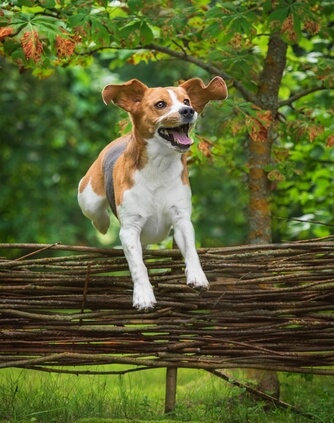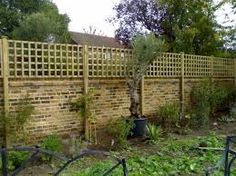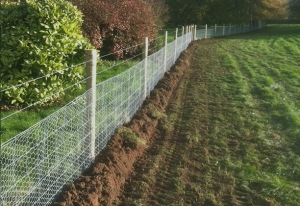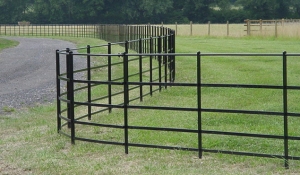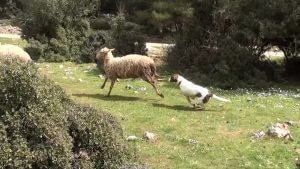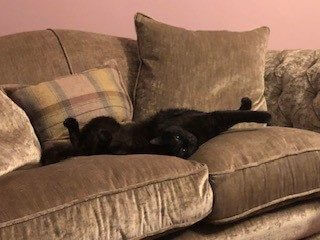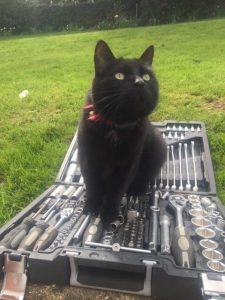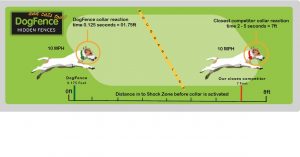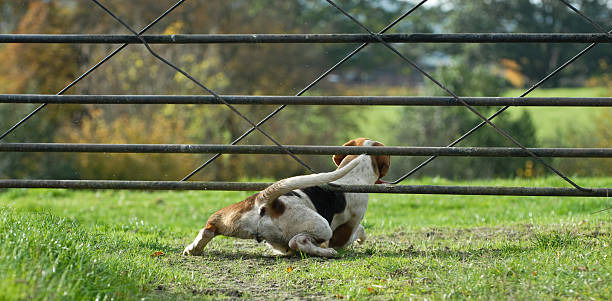Dog Fence Customer Reviews – Real Life Success Stories
Customer Success Stories: Real Experiences with DogFence UK

High Five to DogFence
UK Pet Safety Statistics: The Reality of the Risks
Did you know that around 250,000 dogs go missing every year in the UK, and one in five dogs will escape their home at some point? That’s a staggering number, and the risk of your dog running into busy roads, getting lost, or encountering other dangers is real.
When it comes to cats, the statistics are just as concerning. Over 60,000 cats are killed on the roads every year in the UK. With their natural curiosity, many cats wander into areas where they’re vulnerable to accidents. Traditional fencing might not be an option for cats, but a containment system is the perfect solution to keep your pets safe and secure in your garden.
Customer Success Story 1: Rosie, The Runaway Border Collie
Before: Rosie, a lively Border Collie from Surrey, used to escape regularly and chase cars down the nearby lane, putting her life in danger.
After: The Thompsons installed a DogFence UK system, and now Rosie can roam freely in the garden without fear of running into traffic.
“It’s transformed our lives. Rosie is safe, and we’re no longer constantly stressed. I wish we’d done it sooner!” – Mrs. Thompson, Surrey
Customer Success Story 2: Molly the Spaniel, Keeping Livestock Safe
Before: The Martins faced a terrible situation when Molly, their Spaniel, escaped their property and killed several lambs. The local farmers were concerned, and Molly’s safety was at risk.
After: A DogFence system was installed, and Molly now enjoys full freedom in the garden while staying away from dangerous areas.
“The peace of mind we now have is priceless. Molly hasn’t left the garden once since we installed the system.” – Mr. Martin, Wiltshire
Customer Success Story 3: A Safe Garden for Cats
Before: The Parker family’s three cats were constantly escaping their garden and wandering into the road. They were worried about accidents, especially with busy traffic nearby.
After: With a tailored DogFence system for cats, they now keep their beloved felines within the safety of their garden.
“I didn’t know these systems worked for cats, but they do—and brilliantly. We’re so relieved to have a safe space for our cats to roam.” – Mrs. Parker, Oxfordshire

Safe and Free in the Garden – Cat Fence
️ Why Choose DogFence UK Over Traditional Fencing?
- Cost-Effective: Traditional fencing can cost thousands of pounds to install, especially for larger properties. DogFence UK’s systems are often more affordable and can be tailored to your specific needs.
- Driveway Coverage: Traditional fences often leave driveways unprotected, a major vulnerability for pets. Our systems cover driveways and other areas that are at risk, ensuring your pets are kept safe no matter where they roam.
- Invisible & Discreet: Unlike bulky fences, our systems are invisible—no obstructed views, no noisy barking at the fence, and your landscape remains beautiful.
- Effective for Cats: Traditional fences don’t work for cats, but our specialized systems can be customized to safely contain your cats within your garden’s boundaries.
Research on Containment Fences from FelineFriends.org
FelineFriends.org, a well-regarded organisation focused on feline welfare, recently published a study showing how electronic containment fences are not only more effective but also safer for pets than traditional fences. The research found that containment systems reduce road accidents by up to 80% for dogs and cats—highlighting their ability to keep pets safe from the deadly dangers of busy roads.
How Does the Dog Fence Work?
1. The Transmitter Box
A small transmitter box is installed into your garage, utility room or somewhere easily accessible. The transmitter is about the size of a standard double socket and is similar to radio, albeit a little more high tech!
1. The Boundary Wire
A flexible, buried wire creates an invisible boundary around your garden or specific area and starts and finishes at the transmitter box. This wire can be installed along fences, walls, or driveways, ensuring that your pet stays safely contained. The transmitter sends a coded radio signal down through the boundary wire, the wire acts as an aerial.
2. The Collar
Your pet wears a lightweight, waterproof collar that is designed to “receive” the signal from the boundary wire if the pet enters that area (a distance is pre-set on the transmitter i.e 4ft). The collar emits a warning sound when your pet approaches the boundary line. If your pet continues to move closer, the collar will emit a harmless static correction to remind them to stay within the safe zone.
3. Customisable Settings
The system allows you to adjust the range of the boundary and the intensity of the stimulation (the stimulation is the same used in a tens machine or abdominal exercise belt), ensuring that it suits your pet’s personality and training needs.
4. A Safe, Effective Solution
Unlike traditional fences, which can be costly and difficult to maintain, the DogFence UK system is easy to install and maintain, offering a long-lasting, reliable solution to keep your pet safe without disrupting your landscape or view. Our electronic fences are approximately 80% cheaper than traditional fencing options.
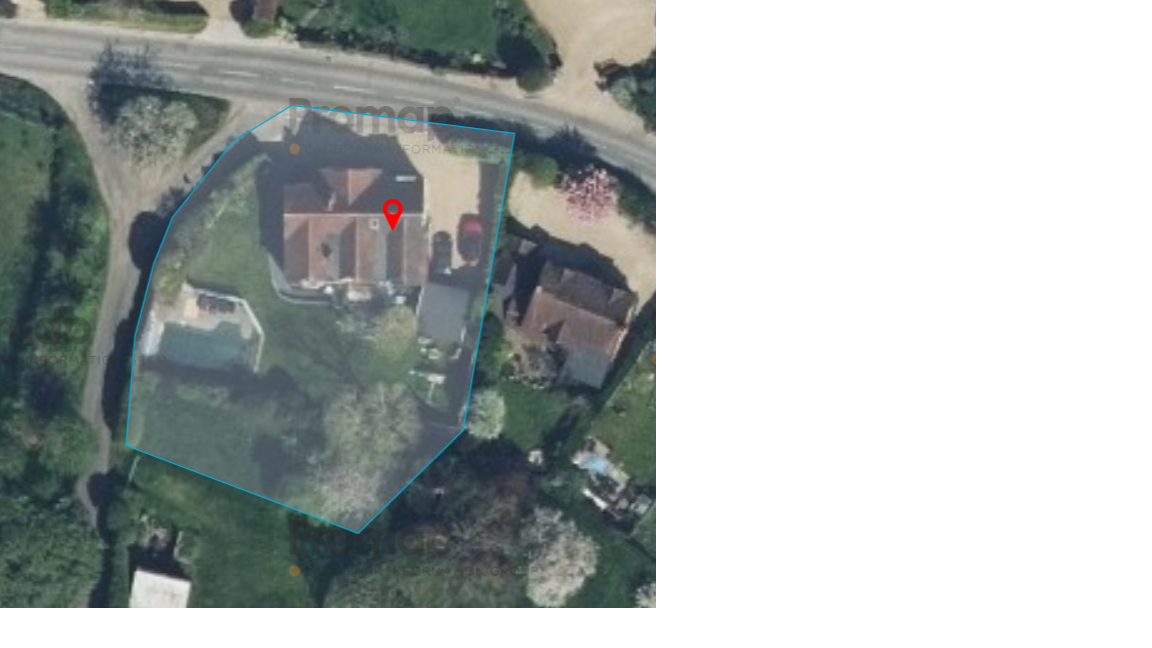
⭐ What Our Customers Say
We’re proud of our high customer satisfaction rate, with many of our clients leaving 5-star reviews. Here are just a few:
“Unbelievable service and a great product. I recommend DogFence to everyone.” – Mrs. Blackwood, Kent
“Finally, a solution that works. My dog hasn’t left the garden once since installation.” – Mr. Taylor, Sussex
✅ Ready to Secure Your Pet’s Freedom? Get a Quote here
Give your pet the freedom they deserve—and the safety you need with DogFence UK.
Call us today for a free consultation and quote:
01628 476475


